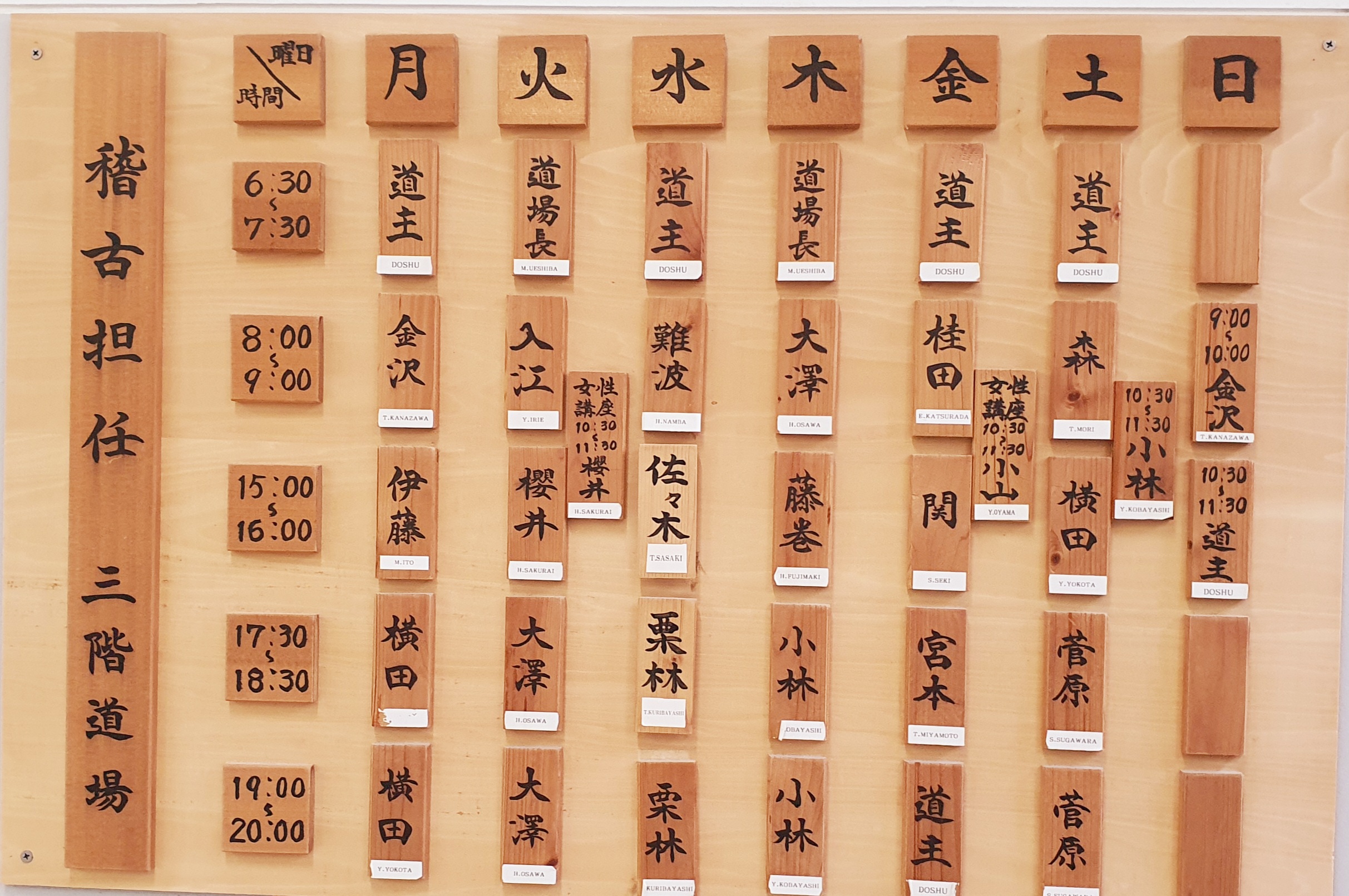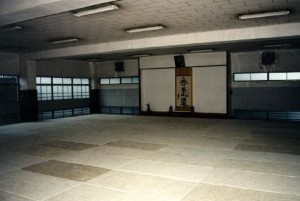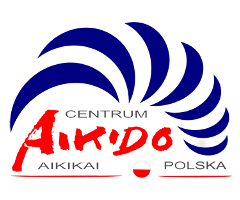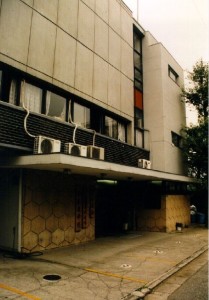
Hombu Dojo Tokyo
Building located at 17-18 Wakamatsu-cho, Shinjuku, Tokio plays basically two roles:
Hombu Dojo – the place dedicated to aikido practice according to Morihei Ueshiba ideas. It is recognized as the central dojo for all Aikikai organizations from Japan and abroad which were established by the Founder or his son’s students and maintained regular connection with them or their family.
Hombu –headquarter of Aikikai Foundation with the board of directors, advisers and (dan) registration body. It is also the headquarter of International Aikido Federation and All-Japan Aikido Federation.
Moriteru Ueshiba – the grandson of the Founder holds the position of Hombu Dojo and Aikikai Foundation President.
Historia
In 1931, Morihei Ueshiba opened the dojo in the Shinjuku district,Tokyo, in order to practice the martial art, which he called Aiki-budo. Despite the fact that the name of this martial art was „Aiki-budo”, the dojo itself was known as Kobukan and was also known of serious approach to practice of this, as they used to say those days, revolutionary martial art. Kobukan was also used to name Ueshiba Dojo.
of this, as they used to say those days, revolutionary martial art. Kobukan was also used to name Ueshiba Dojo.
As the time went by and as the Ueshiba’s students became more and more competent in the art and some of them founded their own dojos. Kobukan became the center (hombu) of detached network of dojos connected together based on the personal relationship between Morihei Ueshiba and his students.
Although, Aikikai was not the official organization, the name gradually became associated with the dojos related to Ueshiba’s Dojo. M.Ueshiba took the grading system from Jigoro Kano used in judo thus the students were bound with their master. As the result of Japan’s involvement in the war, some Morihei’s students were sent to Manchuria where they taught Aiki-budo under the university education programme in the region. Okamura Sensei, for instance, started his Aiki-budo study in 1938 in Manchuria under the guidance of Kenji Tomiki, the founder of Tomiki Aikido.
During the WWII and right after it, the martial art organizations were under the control of Japan army. Morihei Ueshiba moved to Iwama, Ibaraki prefecture. He dedicated himself to agriculture, martial arts and Omoto religion. The Aiki Shrine dedicated to Omoto religion was founded and raised in 1943. At that time, Kobukan activities were supervised by Kisshomaru Ueshiba, the founder’s son. Many so called „second generation” students like Seigo Yamaguchi, Sadateru Arikawa and Hiroshi Tada started their study during that period. Elder students like Rinjiro Shirata, were Kobukan members from the 1930s. When Japan lost the war, during the American occupancy, practicing the martial arts became prohibited. For  this reason, but also because of a very weak economic situation, it was no longer possible to continue the activities of Kobukan and extremely difficult to maintain the dojo-farm in Iwama. As a result, the real Aikido center at that time was in Iwama and only in 1956 it was moved back to Shinjuku. Kisshomaru Ueshiba was employed full time until 1955, and dojo at Wakamatsu-cho became a temporary residence for the families who lost their homes during the bombardment of Tokio city.
this reason, but also because of a very weak economic situation, it was no longer possible to continue the activities of Kobukan and extremely difficult to maintain the dojo-farm in Iwama. As a result, the real Aikido center at that time was in Iwama and only in 1956 it was moved back to Shinjuku. Kisshomaru Ueshiba was employed full time until 1955, and dojo at Wakamatsu-cho became a temporary residence for the families who lost their homes during the bombardment of Tokio city.
Despite of all, Morihei Ueshiba continued enrolling new students to teach them the martial art already known as Aikido. Morihiro Saito joined Iwama dojo in 1946 and Hiroshi Isoyama soon after (secondary school student at that time). The other older students like Okumura sensei returned to Ueshiba’s dojo after releasing from the army service. The organization was still very week. It consisted of Ueshiba’s dojo at Shinjuku, regarded as the origin place of the art, and the Aiki shrine-dojo in Iwama which was de facto Hombu Dojo for faintly connected dojos and more or less autonomous Aikikai groups.
The regular classes in Shinjuku dojo were suspended until 1949. Through the next ten years difficult economic conditions gradually improved and this changed the character of Aikido organization. The changes were particularly noticeable in two areas. Firstly, the Art become accessible to everyone. The letter of recommendation from an eminent Japanese was not needed any more for those who wanted to to become a student. In fact, until around 1956 Tokyo dojo students spent a lot of time on Aikido demonstrations in places such as embassies attracting the new members. Simultaneously, Morihei and Kishomaru Ueshiba’s students started to travel abroad where some of them settled and established their own organizations.
Minoru Mochizuki, Tadashi Abe and Mutsuro Nakazono traveled to Europe and stayed there for different periods of time. Usually the new organizations was called Aikikai and adopted the same structure as the original Aikikai in Japan. Nobuyoshi Tamura (in 1964), Hiroshi Tada (in 1964), Katusaki Asai (in 1965) i Kazuo Chiba (in January 1966) also settled in Europe. The last of mentioned shihans established the Great Britain Aikikai in September 1966 (later the British Aikido Federation).
Establishing the legal basis of Aikido was the second main change. Zaidan Hojin Aikikai (Aikikai Foundation) was established in 1948 and registered in Ibaraki prefecture where Iwama Dojo was located. (In fact, Kobukan had its legal counterpart in Kobukan, a foundation established in 1940 by the friendly offices of the admiral Isamu Takeshita’s, who was the student of Morihei Ueshiba. However, the legal reconstruction of the organization was both understandable and desired as there was a general assumption in 1948 concerning a definitive break up with the Japanese military past.



